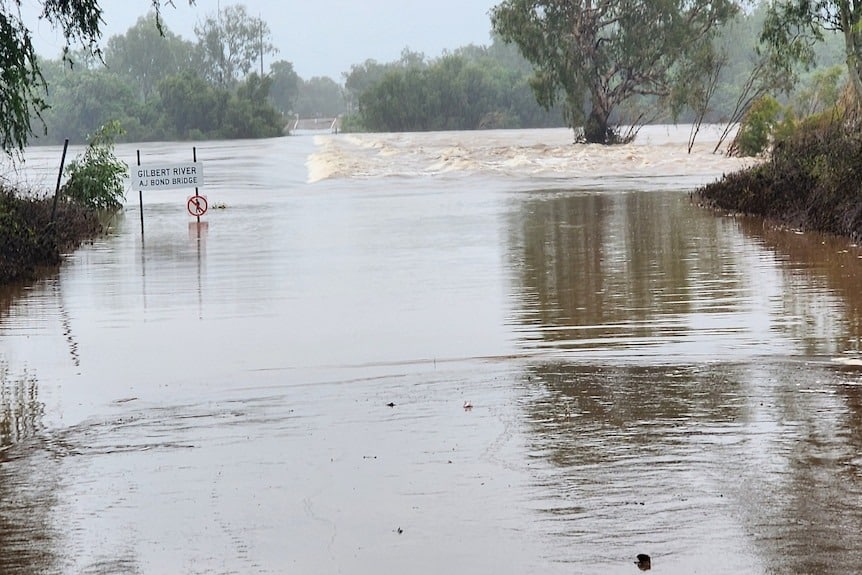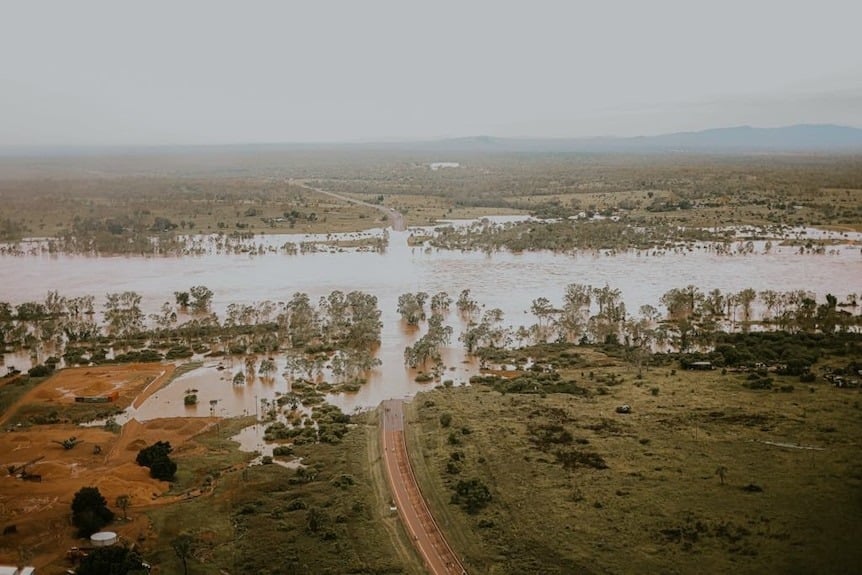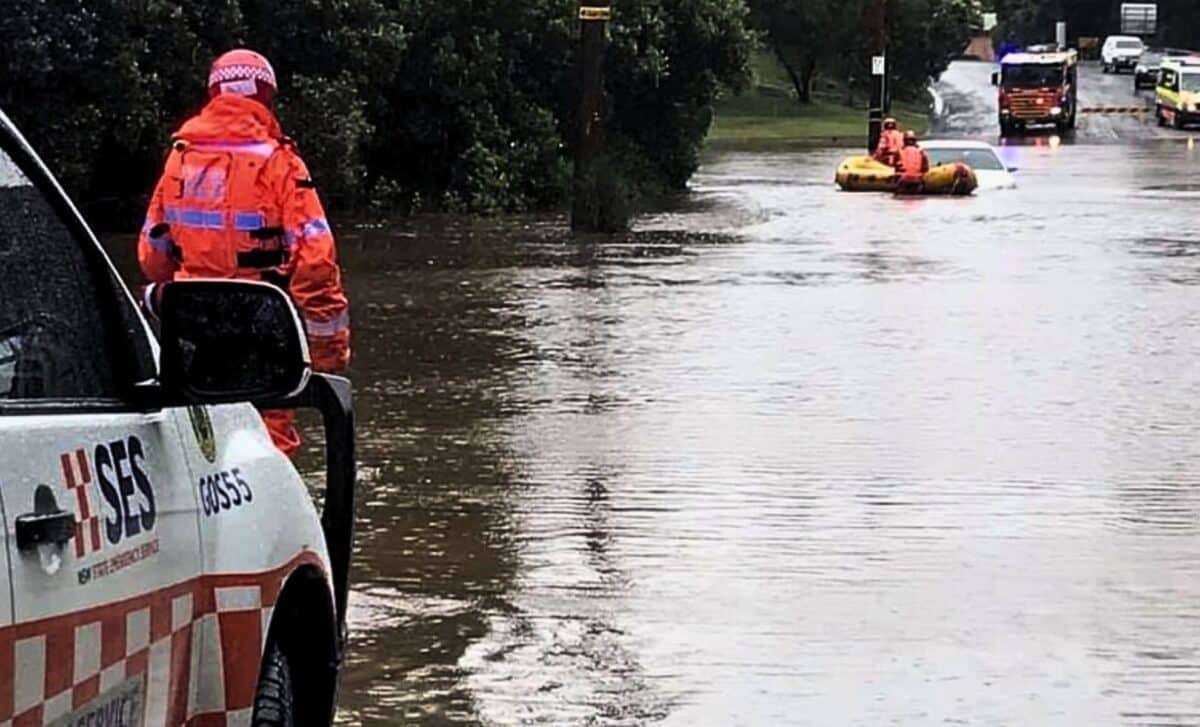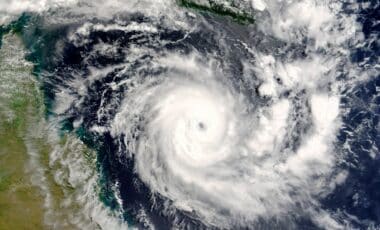The flood-ravaged regions of northern Queensland are seeing a reprieve as heavy rainfall subsides. Forecasters from the Bureau of Meteorology indicate that the monsoon trough responsible for widespread flooding is now consolidating offshore, leading to drier conditions in the coming days. However, major flood warnings remain in place for key river systems, and the economic and logistical impacts of the flooding continue to be felt across affected communities.
Rainfall Eases, but Records Remain Close to Breaking
After days of persistent heavy rain, northern Queensland experienced a reduction in rainfall intensity, with meteorologists expecting mostly dry conditions for the remainder of the week.
Matt Bass, a forecaster at the Bureau of Meteorology, confirmed that rain activity had significantly eased. “That shower activity will really ease today and there should be quite a bit of sunshine,” he said.
Some areas north of Townsville recorded between 50mm and 100mm of rainfall over the past day, with Innisfail recording the highest total of 117mm.
Felim Hanniffy, another forecaster, highlighted that February 2025 has been the wettest on record for the region. Townsville is currently 20mm shy of breaking its all-time record, set in January 1953.

Flood Warnings and Transport Disruptions
Despite the easing rainfall, major flood warnings remain in effect for the Flinders, Haughton, and Herbert rivers. Road closures continue to impact movement, particularly along the Bruce Highway, where flooding between Ingham and Cardwell has forced a major detour.
Local authorities estimate that the Seymour River crossing may not reopen until Thursday evening, while the Macrossen Bridge on the Flinders Highway near Charters Towers is expected to be cleared sooner.
“Once the bridge opens to Townsville, we’ll be able to effectively resupply everything in town,” said Councillor Graham Lohmann, adding that the reopening would bring much-needed relief to businesses and residents.
To assist with ongoing transport challenges, the Burdekin Local Disaster Management Group has introduced a 10-seater rail bus to help residents travel between Ayr and Home Hill, bypassing the flooded sections of the Bruce Highway.

Economic Impact Estimated at $257 Million
The flooding event has had severe economic repercussions, with Townsville Enterprise, an economic development group, estimating total losses at $257 million. The region has seen significant disruptions to transport, agriculture, and local businesses, compounding the financial strain on flood-affected communities.
Electricity outages also impacted several towns, with some residents enduring more than a week without power. Paluma, a small rainforest community, finally had its electricity restored on Tuesday, while Hinchinbrook Shire still has around 100 homes without power.
In response, a volunteer electrician army has mobilized in Ingham to conduct free electrical safety checks for community clubs, non-profits, pensioners, and uninsured residents.
Schools Continue Reopening After Closures
The floods forced the closure of 106 schools, affecting 21,000 students at the height of the event. As conditions improve, schools are gradually reopening, with 11 institutions still closed due to structural damage.
Queensland Education Minister John-Paul Langbroek confirmed that the damage bill currently stands at $1.5 million, though full assessments are still underway. “Some of the issues affecting schools [include] mould, roof leaks, trees down, power being cut and lots of mud,” he said.
Despite the setbacks, staff members have been working to restore learning environments. Mundingburra State School, which was closed for a week due to water inundation and mould, reopened on Monday. Principal Suzanne Currin emphasized that the priority remains creating a safe space for students.
“Quite a few of our musical instruments have sustained damage. We haven’t been able to look at them yet—it’s about getting children back,” she said.
Community Resilience and Support Efforts
While the flood event has posed logistical and economic challenges, community efforts have been instrumental in assisting those affected.
Truck drivers stranded by floodwaters received aid from local helicopter companies, which delivered medication, food, and even beer to those stuck on the roads. Nicholas Dolan, a truck driver who has worked in the region for two decades, noted how critical these support networks are.
“A few of the guys had avocados on board, and they were running out of fuel, so we had to siphon fuel out of their trucks to power the refrigeration units,” Dolan said, emphasizing the broader impact of the flooding on Australia’s fresh produce supply chain.
Local volunteers have also played a role in supporting recovery efforts. Laura Edwards, a Townsville resident, has been delivering donated supplies to residents in Ingham despite the Ollera Creek bridge closure making transportation difficult.
“Seeing people struggling for basic necessities, we should all do something to help,” she said.
Hospitals Remained Operational Despite Challenges
The Ingham Health Service managed to remain functional throughout the flood event, despite operating over capacity at times. The 28-bed hospital accommodated more than 60 patients during the peak of the emergency.
Medical superintendent Dr. Selina Porter explained that staff members voluntarily remained at the hospital to ensure continuous care.
“It became clear early on that the floods could be as big as 1967, the biggest flood on record,” she said. “Some of our staff made the commitment to stay at the hospital instead of going home, sleeping on makeshift beds and couches.”
Health authorities continue to advise caution, warning that floodwaters may contain bacteria and contaminants, posing risks for those returning to their homes.









